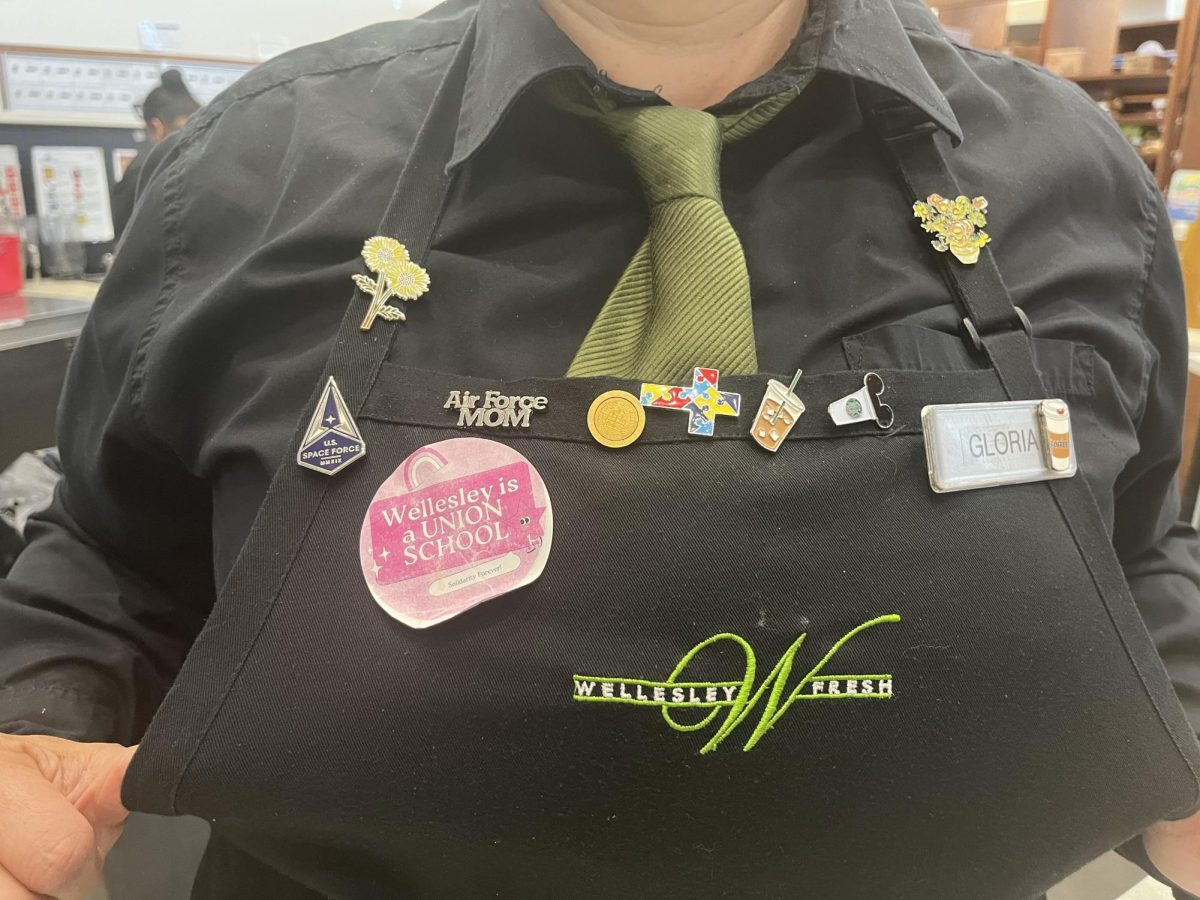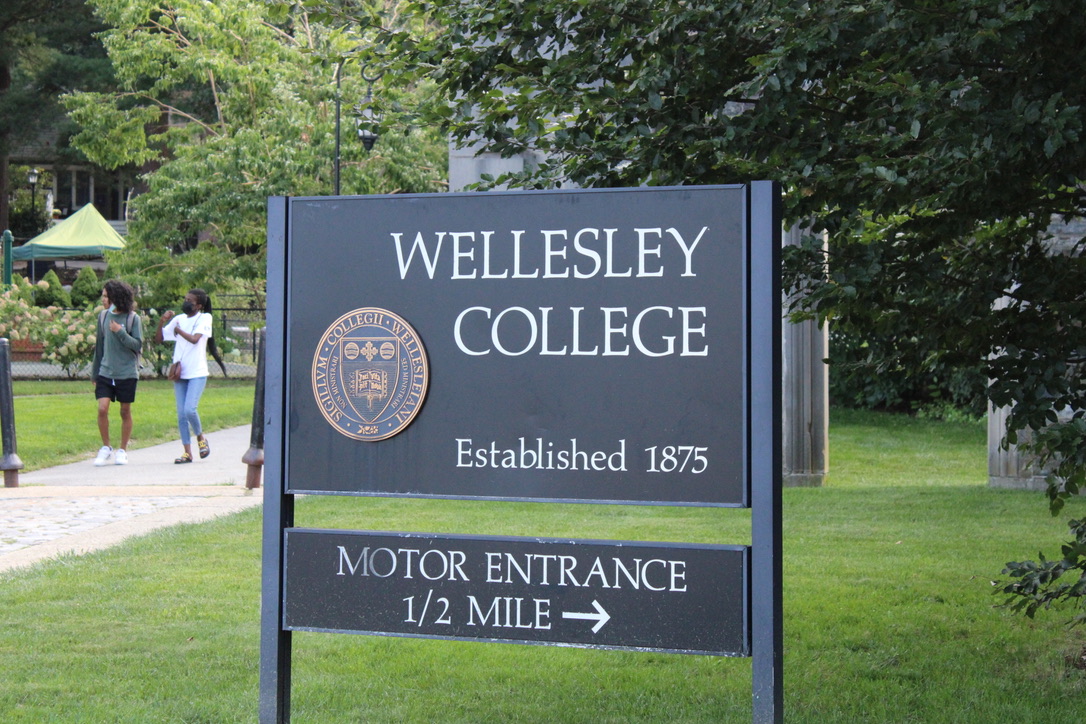With students sitting six feet apart and professors lecturing to half empty rooms, in-person classes look very different this year. Some of Wellesley College’s new precautions include holding classes in larger spaces, spreading desks six feet apart, sanitizing common spaces and distributing microphones so students and professors can hear each other in the classrooms.
“My anthropology [course] is a big lecture class,” Sarah Meier ’24 said. “So instead of being in a normal classroom setting, we are actually in the chapel.”
Meier is also taking environmental horticulture in-person this term, which has only 10 students, a reduction in size designed to make the class safer during the pandemic. According to Meier, many First-years had also wanted to take environmental horticulture, but it filled up too quickly for most to do so.
Even in-person classes have varying degrees of remote elements this semester. For example, Meier’s anthropology course started out with one asynchronous class a week, but her professor has since replaced this model with an additional in-person day. The lecture and discussion component of environmental horticulture is done over Zoom, while the lab is in-person and held outdoors.
“I was told by both of my teachers that they were asked to structure their curriculum in a way that if everything was moved online, it would work out,” Meier said. “I think it’s going well … I’m still retaining the same amount of information, and I don’t feel removed from the class at all.”
Professor Alexander Diesl has adapted the content of his two in-person classes this semester, calculus II and calculus IIA, to fit the seven-week term model. Apart from picking up the pace in class, he also releases some asynchronous video content to make up for lost time, as many other professors are doing.
“One reason why I volunteered to teach in-person is that I taught over the summer in a totally remote class, so I missed seeing students face-to-face,” Diesl said. “Another part of it is … I was able to be flexible, so I volunteered … to try to help out.”
In Diesl’s experience, the administration was understanding of professors’ comfort levels during the pandemic, and to his knowledge, no one was forced to teach in-person who felt unsafe doing so. Both Diesl and Meier feel safe with the precautions the College has taken for in-person classes, although Diesl noted that maintaining physical distancing when entering and exiting the classroom has been tricky for his students.
“I think those transition periods are brief enough that they don’t pose a serious extra amount of risk,” said Diesl.
Even though Diesl believes the distancing measures at Wellesley are both necessary and safe, they create some social barriers in his classes.
“I still don’t necessarily recognize everybody with a mask on, which is weird to me,” Diesl said. “It’s sort-of distanced in some additional way that’s not necessarily physical, but we’re all doing the best that we can. I have no complaints, but that’s the one thing I wouldn’t have suspected that’s different.”
Anissa Mansour ’23 has noticed these differences as well. While she is impressed by Wellesley’s approach to coronavirus safety, she has also gained a newfound respect for the remote learning model. “I think they’re kind of the same,” said Mansour, who is taking one in-person and one remote class this semester. “Even though classes last year were in-person [as well as] this year, there are so many obvious differences and restrictions that it kind of feels the same online.”
Mansour added that she was originally thinking of studying remotely if Wellesley had announced all classes would be online. Now that she has experienced both pandemic class models, she has changed her mind.
“I think I had to experience it,” said Mansour. “But the way my professor has acted and been super relaxed and understanding added to that … Wellesley has done a pretty good job trying to keep it similar. They’ve obviously made changes, but I think they’ve tried to make the changes not as apparent.”






